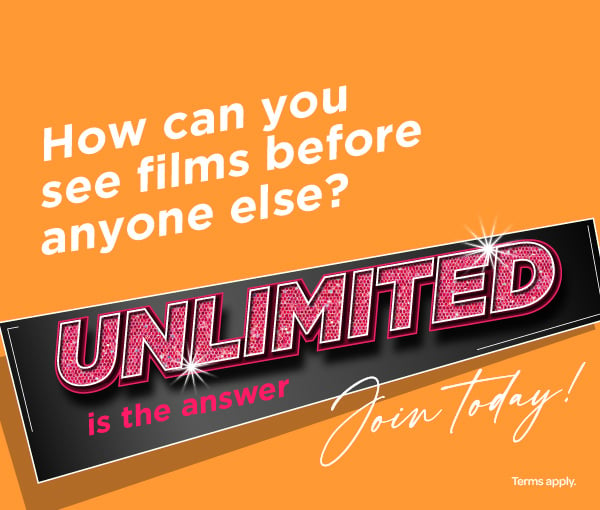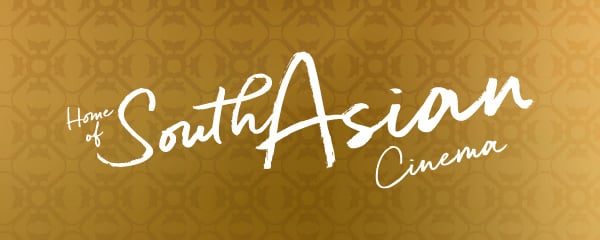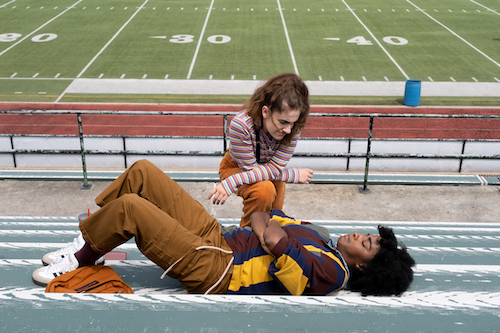
Who says a fight club can't be used as a force for good? In the quick-witted new comedy Bottoms, it turns out that smashing your peers in the face can be a cathartic bonding experience. It just takes the odd broken nose to get there. (And yes, unlike the David Fincher cult classic, it is OK to talk about it.)
Bottoms is directed by Emma Seligman who unites with co-writer and star Rachel Sennott to put a fresh take on the high school experience. Both women collaborated to acclaimed effect on the indie comedy Shiva Baby and they bring a similarly lively, unpredictable sensibility to their latest project.
Sennott plays PJ, a queer teenager who is ostracized along with her queer friend Josie (Ayo Edeberi). The two girls have long felt like outsiders at their school so when they accidentally create a fight club, they initially see it as little more than a chance to score some dates. However, the club soon takes on a life of its own as PJ, Josie and the other members use the setting to get even against the school football jocks, in the process asserting their own sense of identity.
It's a ribald mixture that touches on topical issues with humour and crunchy physicality. We caught up with Emma to discuss the movie's singular tone, her classic high school influences and what she hopes audiences will take away from the film.
Hi Emma, it's great to talk to you. Firstly, I love the way the movie uses physical comedy and movement in service of a sober message. Was that always part of your philosophy when it came to making the film?
It evolved step by step as we went through the filmmaking process. There was always stupidity in the physicality of the football players jumping over cars and stuff while critiquing them at the same time.
We didn't necessarily think about the blend of slapstick comedy and political satire. But when we actually started working with our stunt coordinator, and I started working with my director of photography, I got a better sense of the genres and references that I was combining.
Speaking as a Brit, when I look at American high school movies, the set-up, cliques and fraternities always seem so much more exotic. Is it fun to try and turn this environment on its head?
Yeah, I'm Canadian so I'm a bit closer to the American high school system but still, I see it in a romanticised, exotic way, especially with football culture. It boggles my mind that in these small-town, Friday Night Lights kind of environments so much is riding on these players. They mean so much to these places and unfortunately, that means they can often get away with so much.
The high school sex comedy has been done so many times so it provides a formula that one can subvert relatively easily through your own lens. It's a great structure what with these stereotypes that have existed forever.
Are there any touchstones from the high school genre that influenced you?
Definitely. Initially, it was Superbad and American Pie. I watched so many rom-coms from the 1990s and 2000s – 10 Things I Hate About You, She's All That, Bring It On and Jawbreaker to name some more. I was looking at these campy cult classics that are adored now. Jennifer's Body was another.
Even Kick-Ass, actually, which is a pretty horny movie. When we were developing the look of the film, we went back to like old, old American high school movies like Grease and American Graffiti. A lot of those movies took place during the time when so many high school stereotypes were first created.
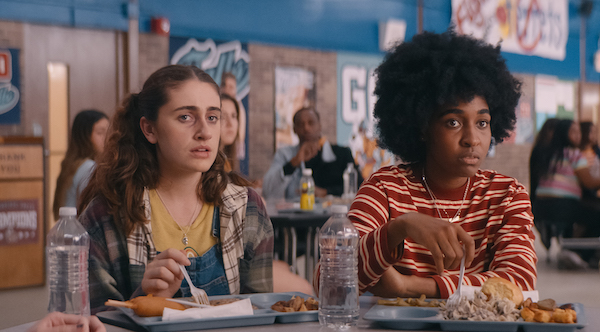
I loved the idea of empowerment as transmitted through a fight club. How did you work with Rachel Sennott to develop the script?
We first met when we made a short film, which later inspired my first feature, Shiva Baby. We met at university and I thought she was so funny. We had only one comedy idea and it was a version of this film. She asked if I wanted to write with her and I said absolutely and told her this idea.
It took us a minute to figure out the fight club conceit but we knew that these were two girls who wanted to have sex. In the classic high school comedy way, they're going to lie and come up with some kind of disingenuous plan to get the club members to like them. Mine and Rachel's version was to have the characters manipulate feminism – in other words, how can it be different if it's from a female point of view?
Given that Rachel co-wrote the script and stars as PJ, was she able to imbue more of herself into the character?
The way Rachel writes is she's just pitching jokes, over and over and over, and I'm dictating them. By the time we were shooting, she knew PJ so well. It was great.
Who was responsible for the Entourage joke? Because that was a killer.
I think that was me! There were a few I got in there towards the end. Most of them were Rachel's. Either that or they were improvised by Rachel and Ayo or Marshawn. But I did love Entourage when I was a kid.
How challenging is it to harness a sense of timing in physical comedy?
I honestly think comedy is the hardest genre and I don't know when I'll make one again. When it comes to controlling the amount of improvising, one must allow the actors to have fun with their performance but they must stay on track within the plot.
When it comes to the edit, I'm the kind of person who wants to see every combination of a scene before we make a decision. That was an exhausting process to see all of the different jokes and takes. It's a hard genre and having made this movie, I now appreciate and respect comedy filmmakers a lot more.
Underneath the jokes, it all needs to make sense. The more you care about the characters, the funnier it is. It certainly helps to care about the relationships in the film. There are multiple layers that one has to be mindful of in terms of calibrating the tone. You don't necessarily need to work that muscle in any other genre. It's challenging.
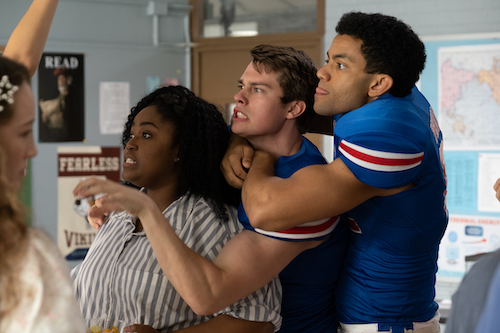
I imagine you have to walk that line between believability and humour, making archetypes both relatable and funny.
Yeah, there's definitely a limit and you have to figure that out in the edit. Which jokes push us too much out of this world? Caring about characters is important but also world-building. Certain jokes can take you too far into the realm of Wet Hot American Summer – in other words, overly absurd territory.
Other times it starts to get more serious and perhaps overly grounded. That takes us out of our absurd world. With this film, it was more the question of what can this town get away with. What kinds of events are the on-screen characters comfortable with? It took a lot of time to figure out how all that affected the audience's moviegoing experience.
The formula of any movie, whether it's a high school movie, a horror, a Western or whatever, inevitably means the audience has some understanding of what they're watching. As soon as you take an audience out of that, it can feel confusing. That was the trickiest part to nail down.
Was this movie also a conscious attempt to smash taboos about women fighting on-screen in such a physical manner?
We thought it would be fun but we didn't necessarily look to push boundaries in that way. We thought it would be fun to show that these girls don't know what they're doing. Often, women do have to take self-defense classes in high school.
We thought it would be funny if the main characters said it was a self-defense club but really they were just trying to show off and perform masculinity. They're performing what they think these femme girls want to see.
There was no aim to change the depiction of women being beaten up on the screen, but then we encountered more and more people who were surprised that we were actually going through with it. They were confused by the notion of a fight club.
We put out a press release about the making of the movie after we'd cast it. This one trade press outlet then put 'fight club' in quotes and we were like, why did you do that? They were like, 'Because otherwise, people would think it's an actual fight club.' But... it is!
There were moments during the filming of the bloodier moments when we questioned it. We were like, does this look like domestic abuse? However, we had to go for it because this was the conceit of the movie. We wanted to honour the genre, plus Fight Club and Kick-Ass and all these classic movies where guys don't know what they're doing.
It means something different when it's women doing it for themselves. It's a different kind of angst we're letting out.
The actors really looked like they were putting themselves through the fight sequences. How much did they have to prepare for that?
It was all the actors. There was only one stunt undertaken by a stunt person. It was just falling down, honestly! But we wanted it to feel real and the actors did have to go through a week-long stunt-training session with our co-ordinator Deven McNair. They all did an incredible job.
Ruby Cruz already had some stunt knowledge because she'd just done the show Willow. However, the rest of them hadn't really done it before. It got to a point where they were too good and too co-ordinated. We needed them to be messier. We wanted it to look real without the need to throw doubles in or use forced perspective. Edgar Wright was a huge inspiration and the way he stages his fight choreography was a big reference point.
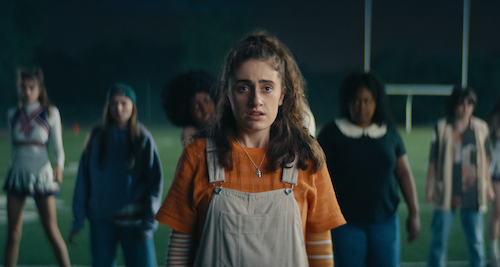
You mentioned the need to be performative and that is a critical part of everyone's school experience. The fight club is a performance, at first, but then it becomes an act of truth.
For some of the girls it does build community and empowerment but for the two central characters, they're just trying to have sex. High school is performative. It's all about talking about sex and putting on an image and figuring out one's identity. What do you want other people to think of you?
Through performance and through shaping the characters, we stumbled on more emotional truths without even realising it.
The movie begins without any opening credits and the dialogue between PJ and Josie is immediately established in an objective manner. We instantly get their voice. This is who they are and this is their sexual identity.
We had this whole other opening, originally. I didn't want any opening credits. I stuck to my guns there because I wanted a bloopers sequence at the end. I was able to win that battle.
This other opening took place at this weird camp and it started with the two of them masturbating in their bunks. A few people said that it could have acted as its own short film! Through test screenings, we discovered it was taking audiences into a whole other place.
So, for the revised sequence, I wasn't sure about the idea of opening in the bedroom with the two of them simply talking about sex. I felt like we'd seen that a bunch of times. Our producer, Elizabeth Banks, was like, 'I think you're underestimating the power of a scene where women talk about having sex with women on-screen while they're preparing for a high school event.'
Ultimately, that was the right decision. Simplicity is best. One needs to jump in and get to the point although it wasn't our intention originally.
Emma, just to round things off, what do you hope that audiences will take away from the movie?
I just hope they're entertained, especially queer audiences. I really hope they see themselves on-screen. I just want to make people laugh.
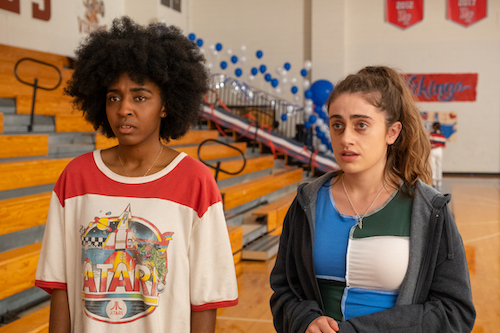
Are you ready to fight for your rights? Bottoms is released at Cineworld on November 3rd so click the link below to book your tickets.
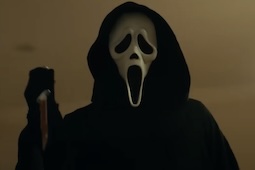
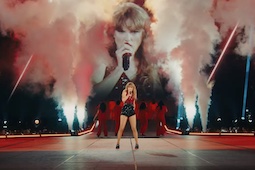
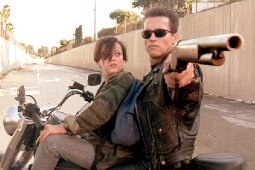
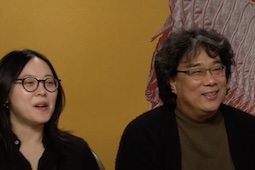
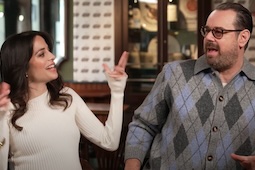
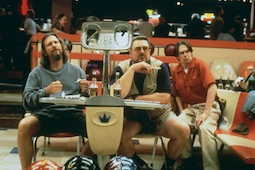
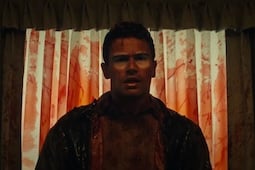
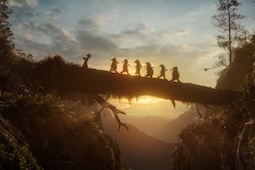
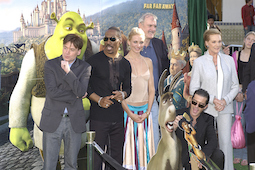
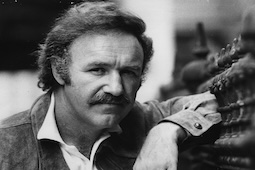
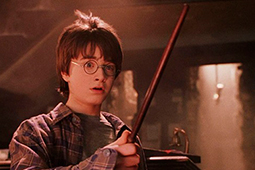

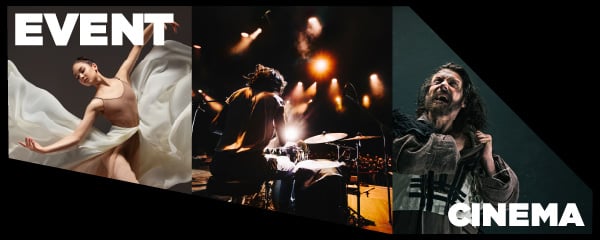
.jpg)
.png)

